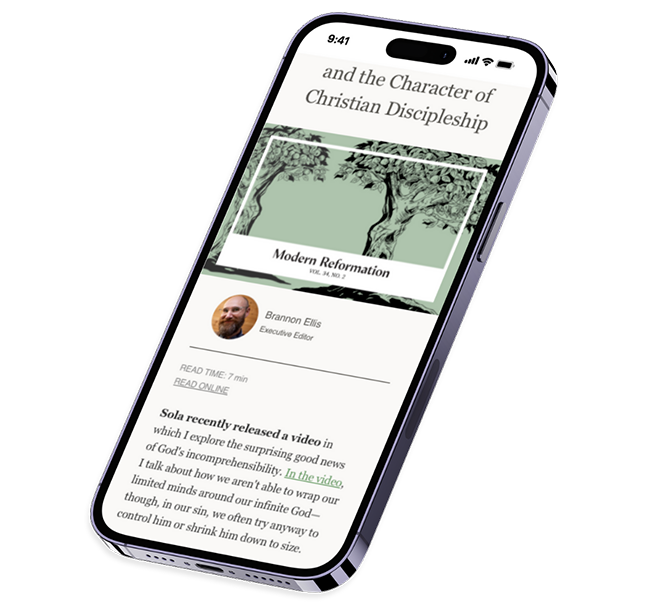Perhaps no timelier book has appeared this year than Bavinck: A Critical Biography by James Eglinton. Eglinton’s biography caps a year of newly-translated works by the great 20th century theologian, who may be the most consequential theologian for our era—ironically, a century after his death. To ask why this biography is important is also to ask why Herman Bavinck is important, so let’s start there.
If you went to a Reformed seminary in the last 15 years or so, as I did, you were likely introduced to Bavinck in whichever course was meant to teach you to think and love the Lord with all your mind. I was newly Reformed and intellectually shallow when I took Dr. Michael Horton’s “Christian Mind” class in 2005. I hardly understood a word the esteemed professor was saying, nor did I like the look a gigantic book called Prolegomena (What the heck is that?) by Herman Bavinck. But through that course and through that book, I began to understand what worldviews are and how to engage them with the Gospel. That course—and the author it introduced me to—are that important.
At that point, Bavinck’s works were just starting to be translated into English by Dr. John Bolt at Calvin Seminary. How these treasures were left untranslated that long is unfathomable (and is explained in this biography). Bavinck—with his friend, Abraham Kuyper—stood astride a vast cultural shift in the Netherlands that shook the church to its very foundations. And while the idealistic and charismatic Kuyper received his laurels through Western Christianity in the subsequent century, the more introverted and systematic Bavinck was left to collect dust on shelves in Dutch libraries.
Know this: Kuyper may have been the more influential Christian leader in the 20th century, but Bavinck will be more influential in the years to come. For risk of hyperbole, Bavinck is the Calvin to Kuyper’s Luther. While Kuyper carved out a place for Christians in the modern era, Bavinck gained an intellectual footing for Christians in the eras to come. Eglinton does an exemplary job showing us why that is the case.
It starts with Bavinck’s roots, of course, and this is where the scanty writing done on Bavinck up until now begins to get him wrong. Bavinck grew up in a denomination of dissidents who sought to preserve Reformed Christianity against what they saw as a broader apostatizing of Dutch Reformed Christians in the face of a rapidly changing culture. His father was an early pastor in this movement, and following in his father’s footsteps, Bavinck sought to defend Christianity in a new age with new challenges.
The problem for biographers of Bavinck is that we are used to paradigms of cultural engagement that place figures in either the fundamentalist/separatist camp or the liberal/accommodationist camp. And in order to accommodate a figure who sought to engage modern opponents and use modern methods in order to defend Christianity, Bavinck is often treated as a theological schizophrenic who played the orthodox figure at points and the heterodox at others. No less a figure than J. Gresham Machen claimed that there is a third camp—that of the confessionalist, who seeks to consecrate the culture rather than capitulate or compromise. Eglinton recovers Bavinck for this very camp.
This in part explains why Bavinck split his fruitful years between his denominational theological school in Kampen and Kuyper’s Free University in Amsterdam. The former allowed him to bring the fruits of his secular education into the service of his denomination’s future pastors; the latter allowed him to bring the rich theological resources of his faith back into the broader cultural sphere. Even in Bavinck’s day, the binary paradigm of cultural engagement led Bavinck to be assailed by each side of the cultural divide.
As Bavinck has been reintroduced to non-Dutch audiences, his theological prowess and accessibility have been readily recognized. Even in his own day, his systematic work was already judged by many to be superior to that of Kuyper (perhaps to a more cautious and meticulous nature). What Eglinton’s biography begins to recover is Bavinck as a different sort of culture warrior. Kuyper—perhaps somewhat like William Jennings Bryan, as a rough American comparison—lived in a world of ideals to which he constantly sought to conform culture. Bavinck could occasionally suffer from delusion (he thought Calvinism was the future of the Netherlands), but tended to be much more realistic about where the culture actually stood and how it was best engaged.
The same modern impulses that democratized the Netherlands and allowed Bavinck’s denomination a measure of freedom would also allow for the democratizing of religions to become enshrined. Pluralism would not just be allowed but would become a fact of life. This posed a new existential threat for the church, which would no longer be vying for a particular type of Christianity, but whether Christianity was viable in the modern world. Increasingly, Bavinck moved from defending Calvinism to Christianity more broadly. In a sense, like Bonhoeffer, he saw Christianity itself under attack and sought to alert Christians to the fact and unify them.
Even here, Bavinck did not do this in spite of his Calvinism but because of it. The rich theological resources of Calvinism allow for such a thoughtful and nuanced approaches to culture. These approaches did come with risk, however. Every front-line Christian theologian lives in a fog-besetting world of ambiguity. In Bavinck’s later years, some of his students justified compromised views of Biblical authority using Bavinck’s incarnational analogy of Scripture. Bavinck was grieved by and repudiated such developments. In addition, while exercising a great deal of foresight in dealing with the place of women in society and the church, his early work could lend itself to faulty egalitarian views with regard to Scripture. At the same time, it could lend itself to a further dignifying of women as well. Theologians can try to preempt the future, but they are not prophets.
The strength of Eglinton’s biography is found in the weakness of its subject. This is not a hagiography, but a candid assessment of a faithful, pivotal, and flawed figurehead in the church. By revealing a raw Bavinck, Eglinton presents to us an accessible mentor in the present cultural struggles. Being anachronistic in the extreme, Bavinck could potentially be described as a postmodern theologian. He was not a triumphalist, seeking to win or recover a country. He saw the changing paradigms and went from being a dissident churchman to a dissident within the culture-at-large. In so doing, he shines a light on the pathway ahead for Christians in the post-Christian West.
To this end, Bavinck offered a startling assessment of America in relation to Europe: “Calvinism had a distinct promise in Europe: it directed morally apathetic, culturally despairing Europeans to utter dependence on a divine grace powerful enough to reform individuals and transform societies. To Americans—already optimistic, convinced of their capacity for virtue, and looking wholly to the future—this antidote seemed unnecessary” (188-89).
But America’s eye to the future has lost its shiny sheen. She now despairs as well. Will the Word of grace will once again grant hope to the lost and despairing, as well as equip the saints for the daunting task as well? Friends, read this biography and fit your hearts for loving battle in the hopeless expanse. If the Lord has chosen Bavinck’s work to be recovered in such dark days, can he not also choose foolish but beloved instruments like us to persevere with courage in Christ?
Stephen Roberts is a US Army chaplain and has written for The Washington Times and The Federalist.



